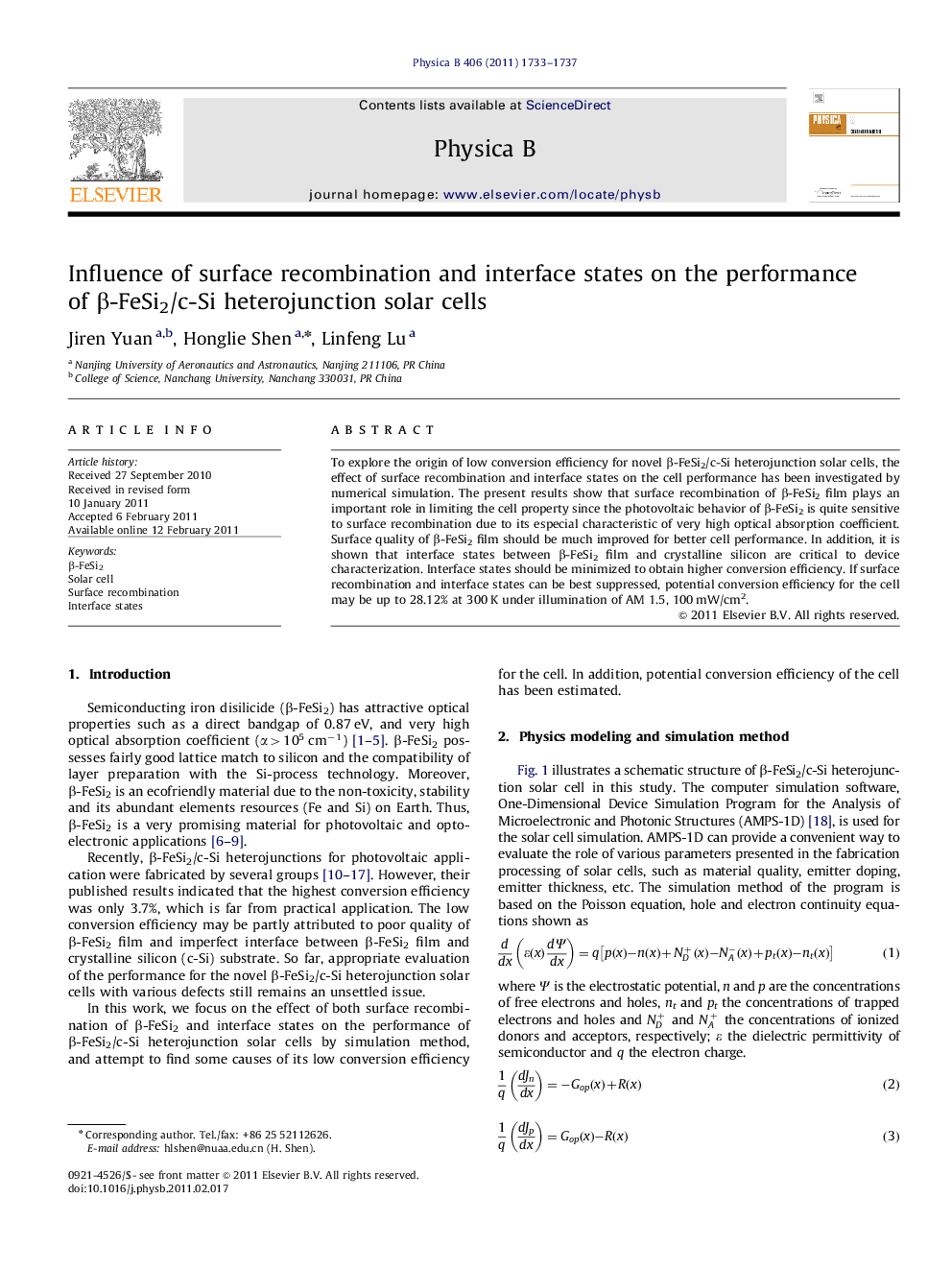| Article ID | Journal | Published Year | Pages | File Type |
|---|---|---|---|---|
| 10714351 | Physica B: Condensed Matter | 2011 | 5 Pages |
Abstract
To explore the origin of low conversion efficiency for novel β-FeSi2/c-Si heterojunction solar cells, the effect of surface recombination and interface states on the cell performance has been investigated by numerical simulation. The present results show that surface recombination of β-FeSi2 film plays an important role in limiting the cell property since the photovoltaic behavior of β-FeSi2 is quite sensitive to surface recombination due to its especial characteristic of very high optical absorption coefficient. Surface quality of β-FeSi2 film should be much improved for better cell performance. In addition, it is shown that interface states between β-FeSi2 film and crystalline silicon are critical to device characterization. Interface states should be minimized to obtain higher conversion efficiency. If surface recombination and interface states can be best suppressed, potential conversion efficiency for the cell may be up to 28.12% at 300 K under illumination of AM 1.5, 100 mW/cm2.
Related Topics
Physical Sciences and Engineering
Physics and Astronomy
Condensed Matter Physics
Authors
Jiren Yuan, Honglie Shen, Linfeng Lu,
